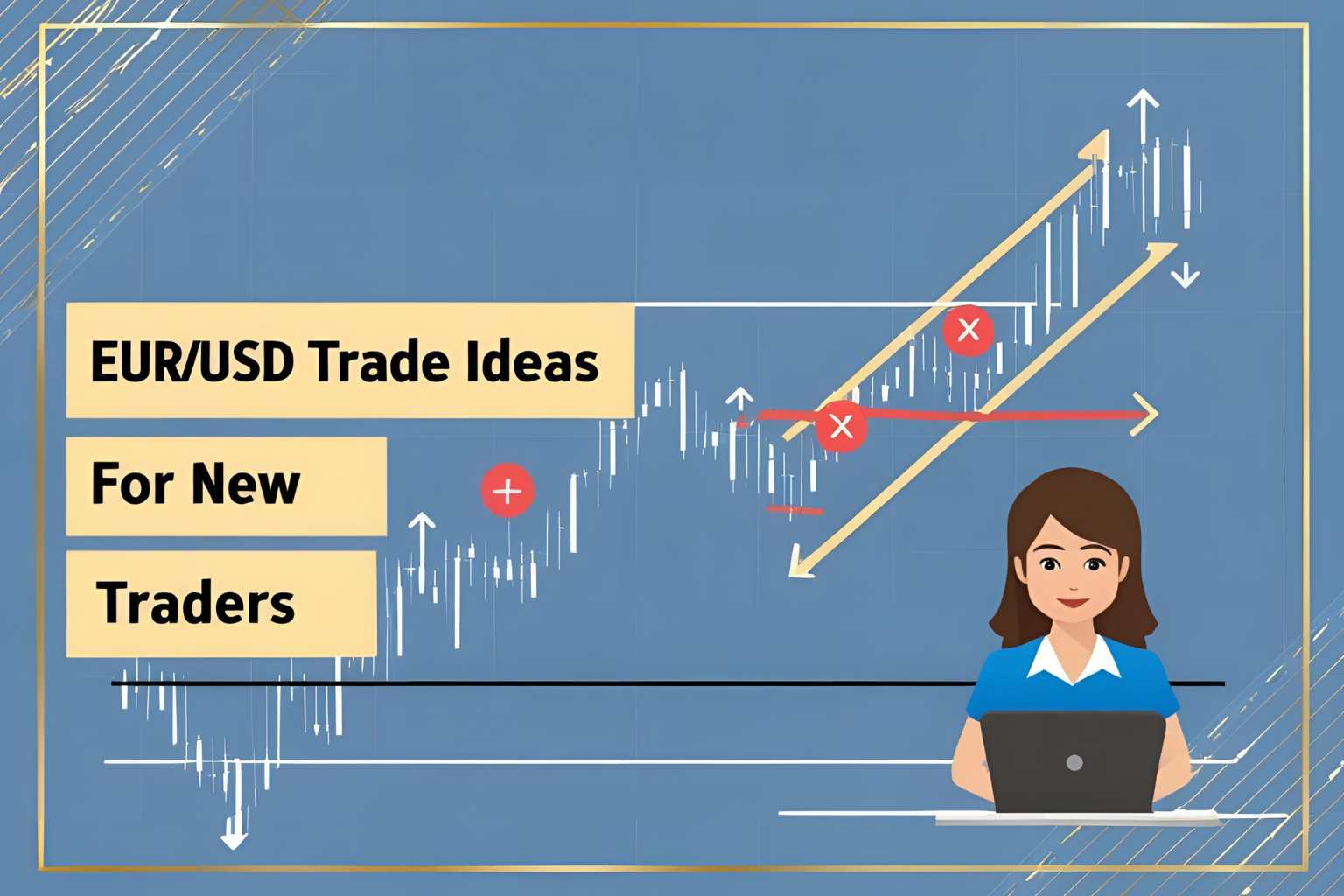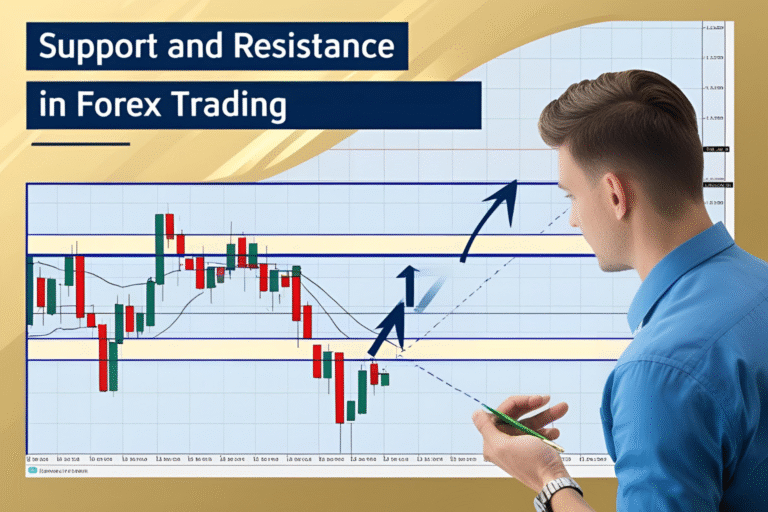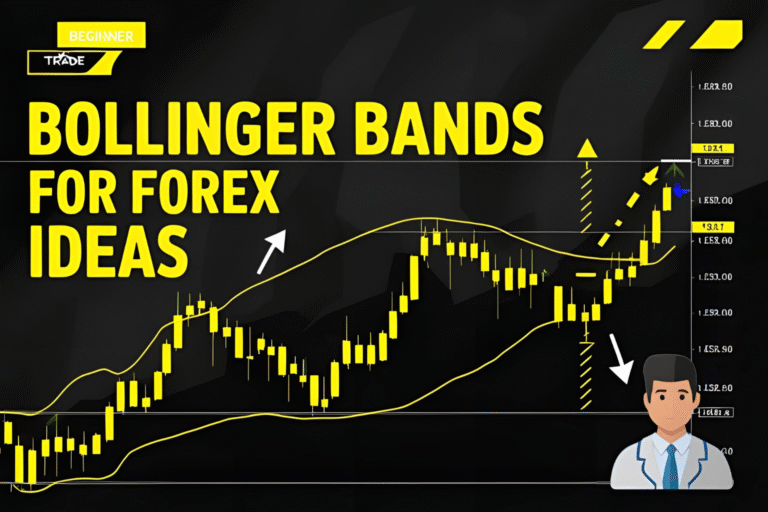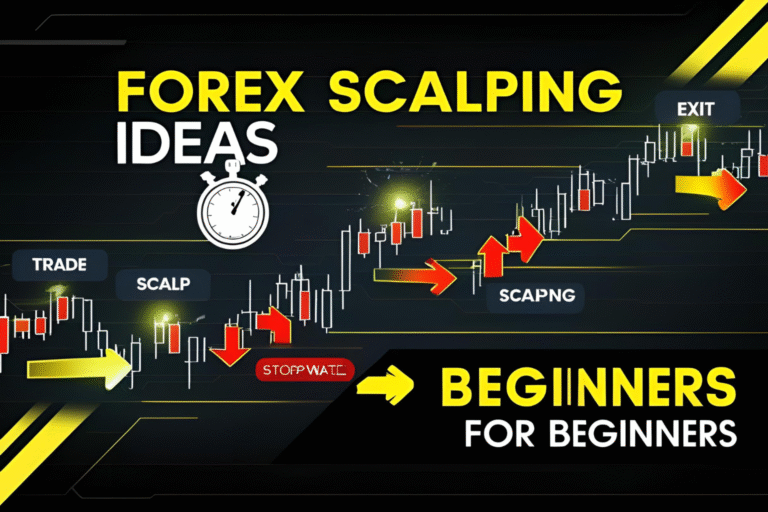EUR/USD Trade Ideas for New Forex Traders
The EUR/USD currency pair is the most traded forex pair in the world—making it ideal for beginners. It offers high liquidity, tight spreads, and clean technical patterns that are easy to learn. In this guide, we’ll share practical and beginner-friendly EUR/USD trade ideas to help you start trading with structure and confidence.
Why Trade EUR/USD?
- High Liquidity: Smooth price movement with tight spreads
- Good for Technical Analysis: Respects key levels and indicators
- Available 24/5: You can trade it from Monday to Friday across all major time zones
1. Trade Support and Resistance Zones
EUR/USD reacts well to horizontal support and resistance levels, especially near psychological round numbers (e.g., 1.0800, 1.1000).
Strategy:
- Entry: Buy at support or sell at resistance with a confirming candlestick (e.g., pin bar or engulfing).
- Stop-Loss: Just outside the zone (10–15 pips buffer).
- Target: Previous swing high or low.
Tip: Use the 1-hour or 4-hour timeframe for a balance between clarity and speed.
2. Use Moving Averages for Trend Pullbacks
The 50-period Simple Moving Average (SMA) and 200-SMA are great tools for spotting trend direction and retracement opportunities.
Strategy:
- Entry: Enter when price pulls back to the 50-SMA during an uptrend and shows bullish confirmation.
- Stop-Loss: Below recent low or the 200-SMA.
- Target: Recent high or next resistance zone.
Why it works: Institutions often use moving averages to guide long-term positions.
3. Breakout Strategy Around Economic News
Major EUR/USD moves often follow key economic events like:
- ECB interest rate decisions
- U.S. Non-Farm Payrolls (NFP)
- CPI or inflation data
Strategy:
- Entry: Wait for the news release and trade the breakout of a tight range.
- Stop-Loss: Inside the range.
- Target: Twice the size of the breakout range or next key level.
Beginner Tip: Use caution and reduce trade size around high-impact news.
4. Use RSI to Confirm Overbought/Oversold Conditions
Pairing EUR/USD setups with the Relative Strength Index (RSI) adds an extra layer of confirmation.
Entry Ideas:
- Buy when RSI < 30 and price hits a support level.
- Sell when RSI > 70 and price tests resistance.
FAQs
What is the best time to trade EUR/USD?
The best time is during the London and New York session overlap (8 AM – 12 PM EST), when volatility and volume are highest.
Can I swing trade EUR/USD as a beginner?
Yes. Use the 4H and daily charts with clear setups and proper risk management.
What’s a good stop-loss size for EUR/USD?
Beginners can use 20–40 pip stops depending on volatility and time frame.
Does EUR/USD follow fundamentals?
Yes, both technicals and macroeconomic news (like interest rates, inflation, GDP) influence price action.
Is EUR/USD better than trading exotic pairs?
For beginners, absolutely. It has better spreads, cleaner charts, and lower risk.




